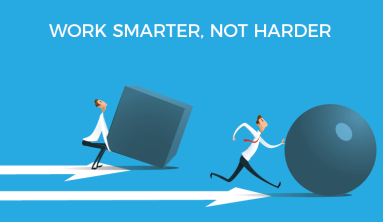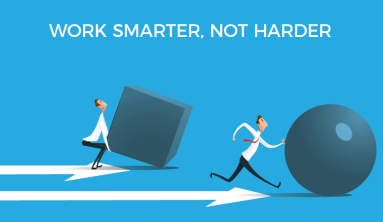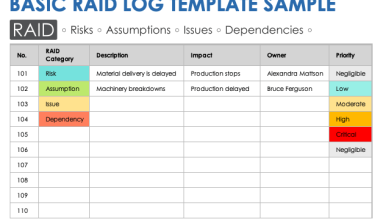A work breakdown structure (WBS) is a visual project breakdown. Beginning with the scope of work, the WBS shows the deliverables and how they connect back to the overarching project.
Since a work breakdown structure is displayed visually, it can be created using a combination of workflow management software and project management frameworks. Some of these methods include timelines, Kanban boards, and calendars.
We’ll walk you through how to make a work breakdown structure, what to include, and show examples for how you can apply it in your own work.
What is the work breakdown structure in project management?
A work breakdown structure is a tool that helps you organize your project by hierarchy. With a WBS, you break down deliverables into sub-deliverables to visualize projects and outline key dependencies. Every work breakdown structure is made up of a few parts:
-
A project baseline or scope statement, which includes a project plan, description, and name
-
Project stakeholders
-
An organized project schedule
-
Project deliverables and supporting subtasks
Project managers use work breakdown structures to help teams to break down complex project scopes, visualize projects and dependency-related deliverables, and give team members a visual project overview as opposed to a list of to-dos.
From there, you’ll organize your structure based on the hierarchical levels of sub-deliverables. Your project might also include phases based on the work needed and the overall project timeline.
The 2 types of WBS
-
Deliverable-based work breakdown structure: This is a deliverable-oriented hierarchical decomposition of the work. If that's a mouthful, don't worry—essentially, this basically means that you’ll look at the overarching project scope and break your work down into deliverables that support it. This approach is best for shorter projects with a really clear outcome. For example, developing your annual revenue report.
-
Phase-based work breakdown structure: Here, you use project phases to create work packages that house groups of tasks. These task groups are then completed in stages. You’ll want to use a phase-based WBS for longer projects with less defined outcomes. For example, you want to boost retention by 20% over the next three years.
What are the 3 levels of work breakdown structure?
Levels of a work breakdown structure help separate tasks by dependencies. Since projects can differ so significantly, the levels of your work breakdown structure will too. While most projects do have some form of dependencies, it’s possible you’ll come across projects that don’t require sub-dependencies. 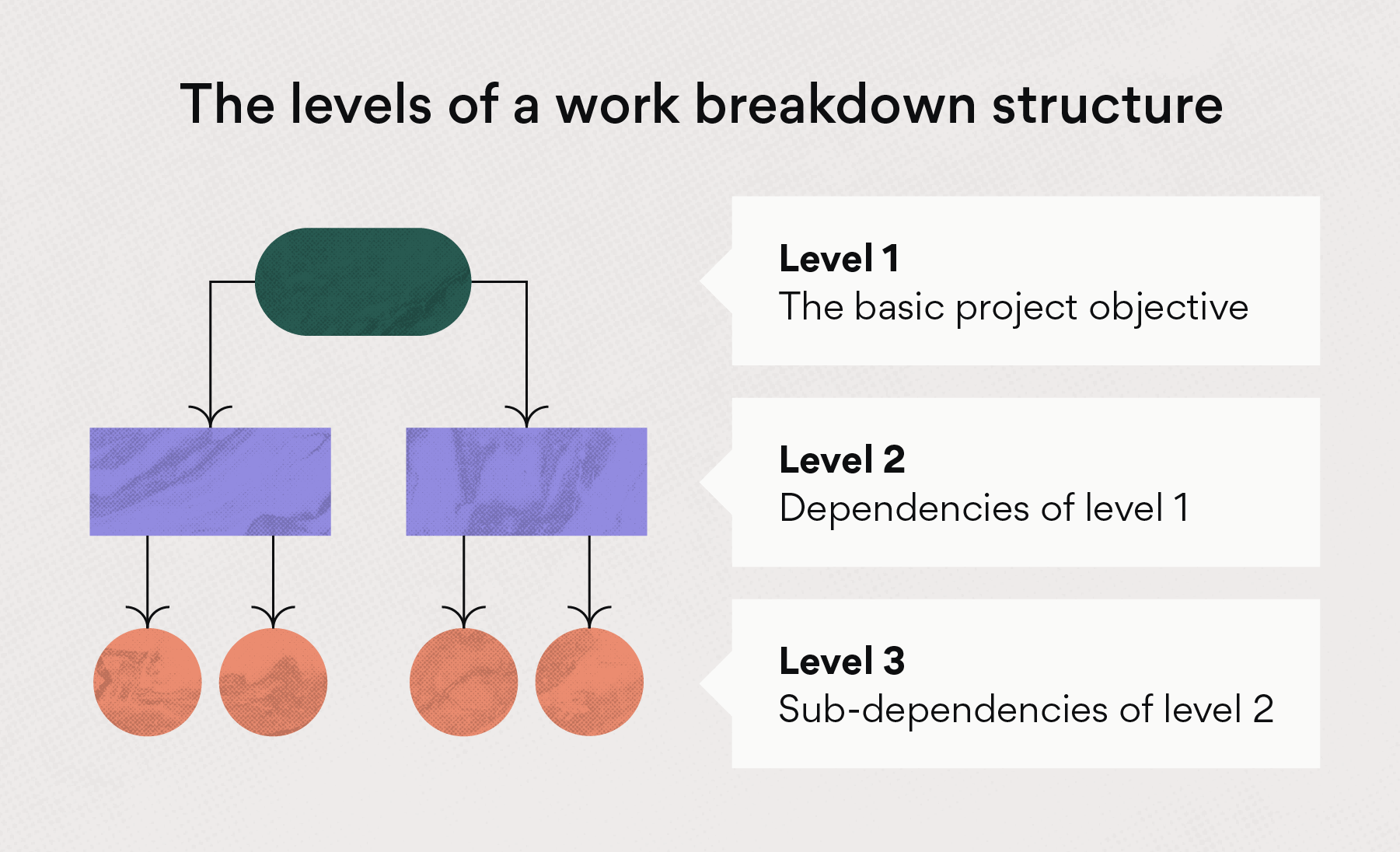
There are three main levels of dependencies, though your structure could require more or fewer than that. Each level is connected to a parent task, with the work needed to complete the parent task organized into dependencies.
Let’s take a look at the three highest level dependencies within a work breakdown structure.
Level 1: The parent task
The first level of a work breakdown structure is the most simplified form of the project since it contains the parent task. This is usually the same as the project objective.
Let’s say, for instance, that your project team is working on revamping your website design. The first level of your WBS might look something like this:
-
Launch new website design
As you can see, it’s simple and straightforward. Level one is the basic objective and the first step of your many project management phases. The work needed to complete this objective will come later in levels two and three.
Level 2: Dependencies and tasks
From there, your breakdown structure will get a bit more complicated depending on the scope of the project. Level two of your WBS will include subtasks, otherwise known as dependencies, of the parent task.
For example, let’s look at what tasks might be needed to launch a new website design.
-
Host a creative brainstorming session
-
Revamp brand guidelines
-
Create messaging framework
-
Redesign your logo
-
Add new photography
While slightly more granular than level one, level two is still a high-level overview of the dependencies needed to complete the project objective.
Level 3: Subtasks
In the third level of the WBS, break these dependencies down even further into more manageable components called sub-dependencies. At this stage—the lowest level of the project lifecycle—you’re defining the most detailed tasks. These actionable tasks will simplify the path to completing all your required deliverables.
Continuing the above example, here are the level three tasks you could use for a new site design:
-
Choose brand colors
-
Build a brand mood board
-
Assign UX designers
-
Build a mockup design
-
Review and approve mockups
-
Schedule a brand photoshoot
-
Resize and edit pictures
As you can see, the work needed to complete the project objective is becoming much more clear. You may even choose to add additional levels to your WBS, depending on how specific you want your visual to be.
What’s included in a work breakdown structure?
A work breakdown structure is essentially a condensed project plan organized in a visual hierarchy. That means it contains everything that a successful project charter has, which includes WBS elements such as objectives, deliverables, timelines, and key stakeholders.
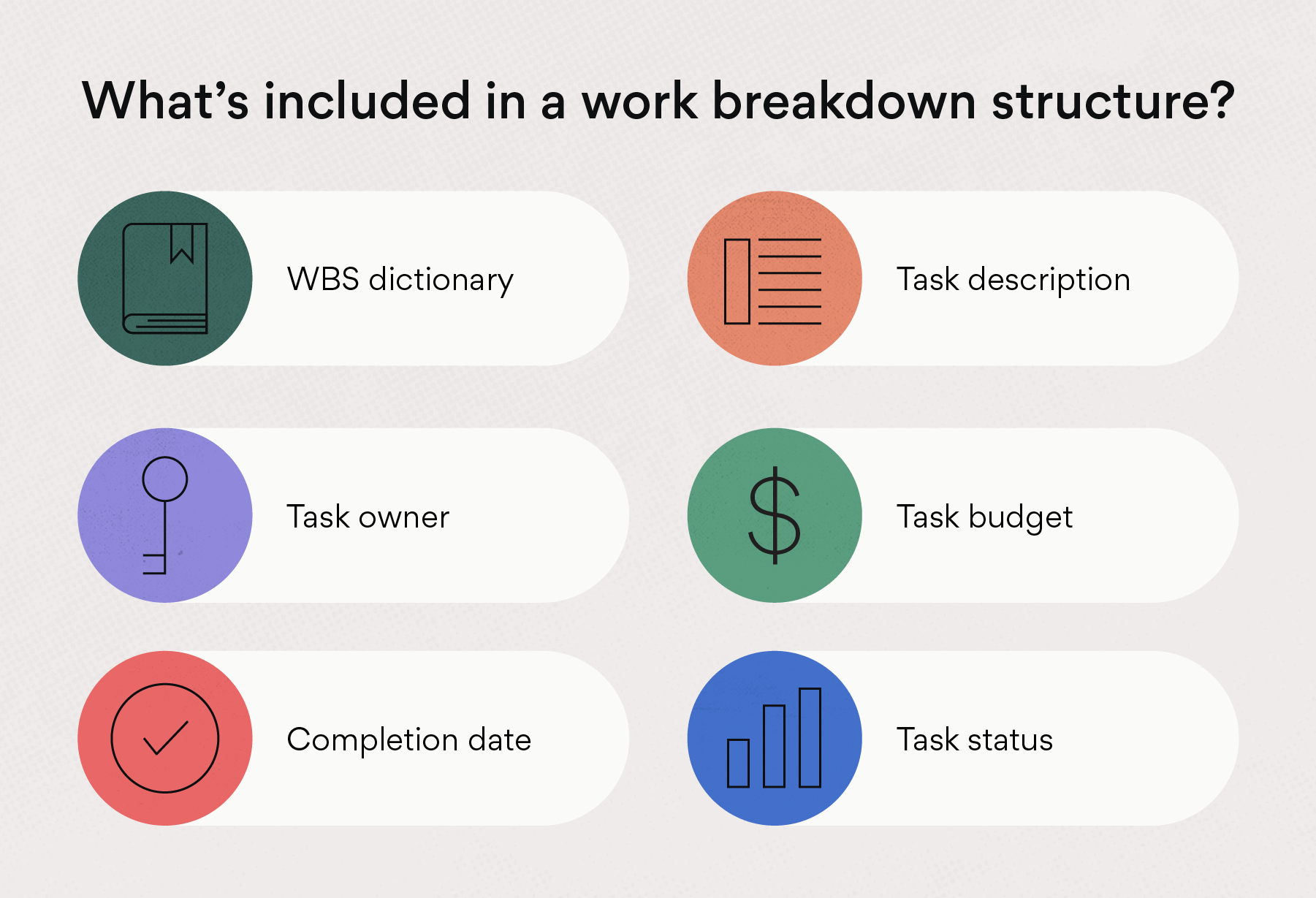
To create your own breakdown structure, you first need to know what to put in one. Thankfully, we’ve got you covered. Let’s take a look at some of the key pieces to include in your work breakdown structure.
WBS dictionary
A work breakdown structure dictionary is a great place to start when building a new project structure. Because the visual nature of a good WBS doesn’t allow room for detailed explanations, the WBS dictionary describes each task in more detail. Creating a dictionary is an instrumental part of helping project team members more easily find necessary details of your tasks.
While created by you, it may be beneficial to enlist the help of team members from various departments. This will ensure the dictionary is as useful as possible and all items are explained correctly.
Some fields you should include in your dictionary are:
-
Task names: Keep this clear and simple, a few words at most.
-
Descriptions: Go into a little more detail but no more than a sentence or two.
-
Deliverables: Again, specificity is your friend here. Be clear about what, exactly, you’re expecting the team to complete.
-
Budget: your projected expenses, including how much you’ll spend, for what, and by when.
-
Milestones: Significant moments on the project timeline where a batch of tasks are completed.
-
Approvals: What tasks—if any—need approvals.
While there are multiple fields you can include, the main thing to consider is creating a resource where project team members can find information on the project work needed to complete various tasks.
Task description
The task descriptions include both a task name and a brief description of the objectives. Since your WBS won’t have space for a full description, you can include additional details in your WBS dictionary.
The objective of the task description is for team members to easily recognize what the task is in the shortest way possible. So don’t get too caught up in the level of detail needed just yet.
Task owner
The assigned task owner is an important piece to include both for accountability reasons and for communication. The easier it is to find answers, the quicker the tasks will be finished. While project managers are often task owners, department heads, and managers may also be owners depending on the type of task.
There’s nothing worse than wasting time looking for project information. Assigning task owners can improve team productivity as project stakeholders will be able to quickly direct questions to the appropriate person.
Task budget
While not always needed, projects that require large budgets should be tracked carefully. It’s helpful to assign specific task budget caps in order to easily track how close you are to your allocated budget.
Not tracking your budget could result in spending more than anticipated, which can dig into your profit margin. So be sure to not only track your total budget but individual task costs as well.
Completion date
It shouldn’t be a shock to hear that tracking your target completion date is a rather important detail. That said, it’s important to be prepared for changes to your completion date.
While it can be difficult to manage multiple projects that go over their allotted timeline, sometimes it’s inevitable. In order to properly track progress, you should break down each task in a timeline or other project management tool. This way you can catch timeline delays in real time and work to prevent deadline issues from stacking up and causing you to miss your original completion date.
Task status
Along with timeline tracking, documenting task status is important for quick progress checks. This can be logged in a few different ways, but many teams use terms such as open, in progress, and complete.
This will not only help track progress but give a high-level overview of team productivity. For example, if there’s a pattern of select teams unable to complete tasks there may be an underlying issue. That way you can work to solve team workload or communication issues before they become huge problems.
How to create a work breakdown structure
Now comes the fun part. Since a work breakdown structure is in the form of a visual hierarchy, there are a number of ways to create yours. The best part is that you get to pick which method is right for you and your team.
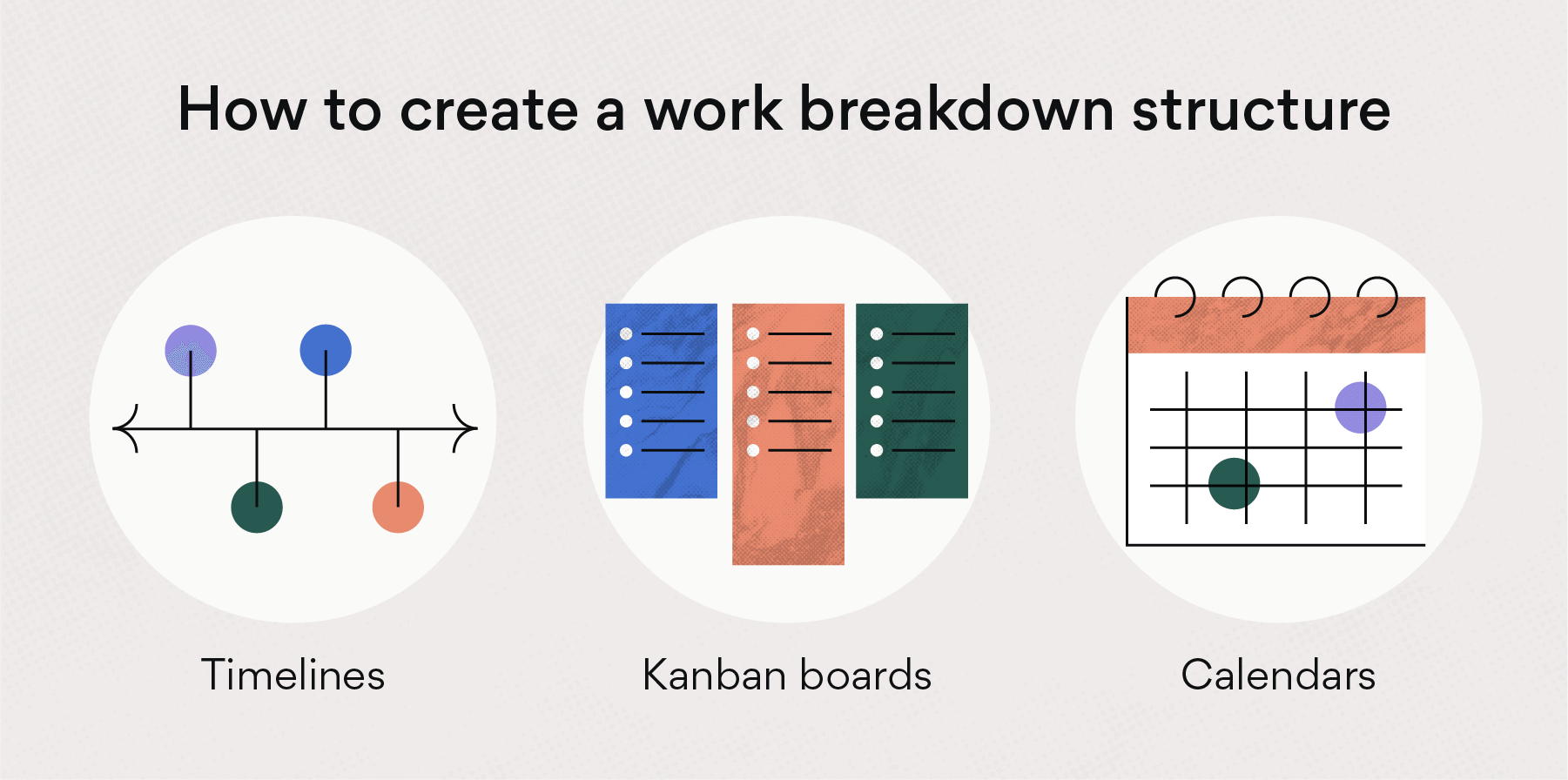
Common visual methods that teams use include timelines, Kanban boards, and calendars. Depending on the software you use, some features may look slightly different in each. Let’s dive into these three methods in order to provide a deeper understanding of how you can create a work breakdown structure in each.
Timelines (or Gantt charts)
Timelines are great tools to visualize work in a fun and colorful way. They’re also great at providing the necessary functionality for a WBS. Here are some of the functions you get using a timeline, also known as a flowchart or Gantt chart:
-
Import traditional spreadsheets
-
Track progress
-
Adjust tasks
-
Connect tasks by dependencies
-
Adjust deadline shifts
-
Assign task owners
-
Store unscheduled tasks
-
Adjust color tracking
-
Section by levels
-
Filter and sort tasks
You can start your WBS in a number of ways, including by importing an existing spreadsheet or building it directly in timeline software. Timelines are different from Kanban boards and calendars due to the visual layout and adjustable functionality. It’s really up to your preference to determine which visual is right for your team. 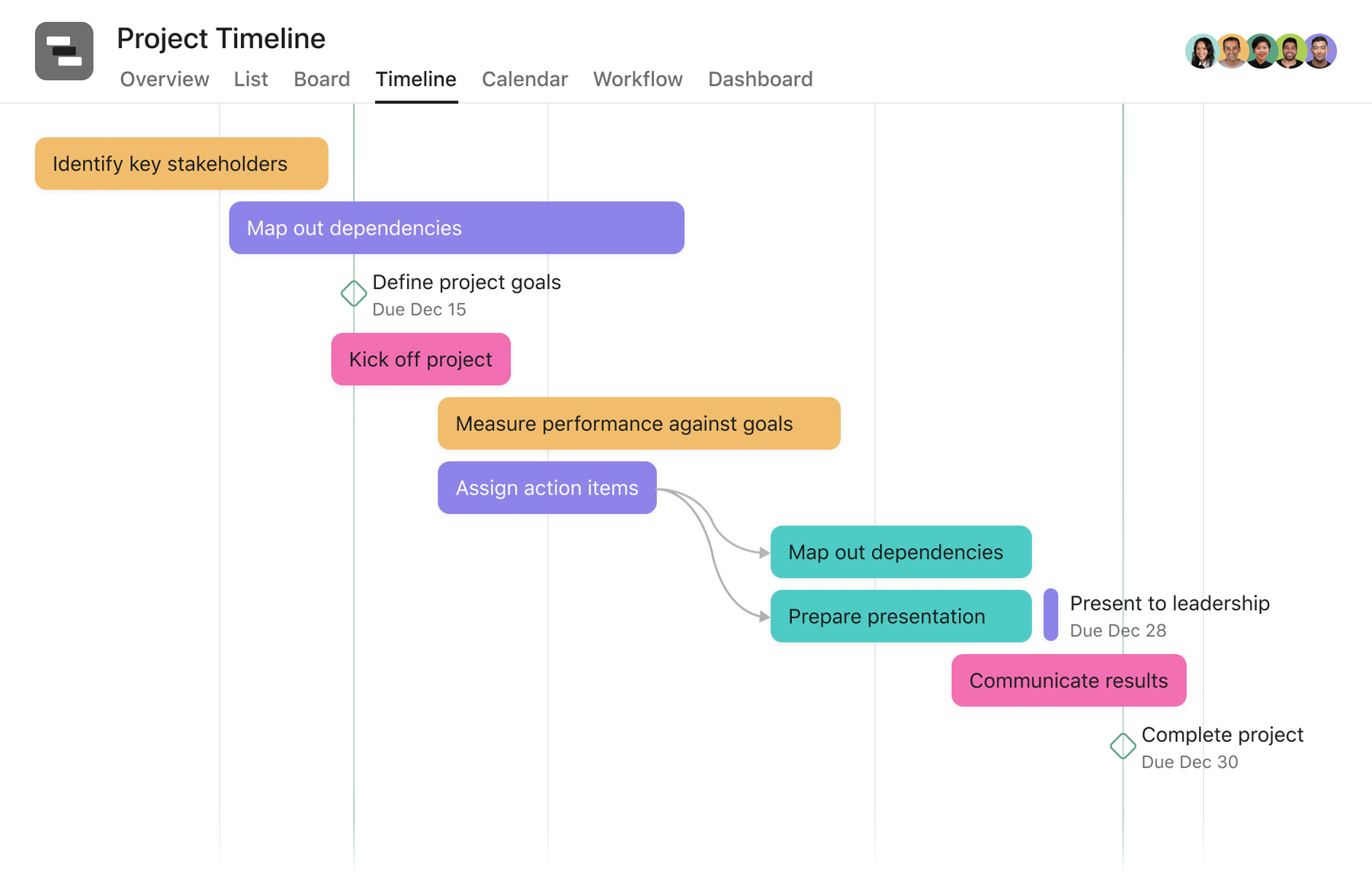
Kanban boards
Kanban boards are similar to timelines but differ in the way they’re visually organized. Instead of being organized in a horizontal line, they’re designed to look like boards. Kanban software can help with the following to keep your projects on track:
-
Track progress
-
Adjust tasks
-
Connect tasks by dependencies
-
Adjust deadline shifts
-
Plot workflows
-
Communicate in one place
-
Plan product roadmaps
A Kanban board is another great option for building out your WBS, and it’s one of the most frequently used tools for day-to-day resource management needs. One of the best things about this tool is that you can see task details up front. This makes it a great option if you’re unable to create a WBS dictionary.
The best way to get started with this method is to start building your hierarchy within your Kanban board.
Calendars
The third option for creating a WBS of your own is by using team calendar software. While not as commonly used for breakdown structures as the previous options, they’re a great tool to visualize projects. They’re also especially helpful for switching between day, week, and month views for large projects.
Calendars are great tools for creating a WBS and they give you a different visual experience from the options above. To start your structure using a calendar, you can import an existing spreadsheet or start building a new project within your calendar software.
Work breakdown structure example
Now that you know what goes into a WBS and how to build one using a variety of software tools, let’s look at a tangible WBS example. While your template will look slightly different depending on the method you use to create it, your WBS should include similar task hierarchies and levels.
Here is an example work breakdown structure to get you started on your own.
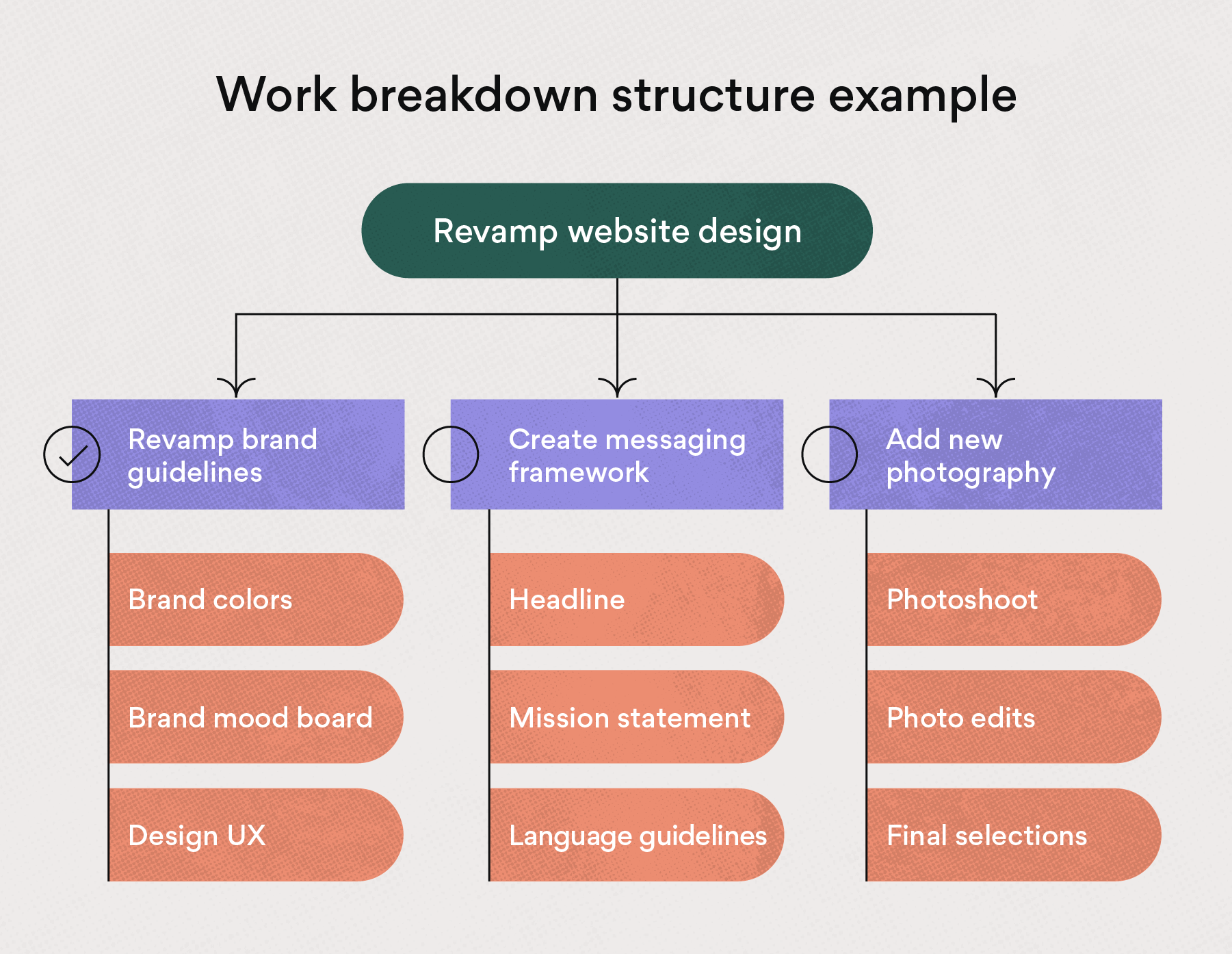
Here is an example work breakdown structure from the above details to get you started on your own.
WBS name: Website design
Description: Revamp our old website design based on the new branding.
Completion date: 9/15/21
Budget: $50,000
Level 1:
-
Revamp website design
Level 2:
-
Revamp brand guidelines (Complete)
-
Create messaging framework (Complete)
-
Redesign logo (In progress)
-
Add new photography (Open)
Level 3:
1. Revamp brand guidelines
-
Brand colors—Kat Mooney
-
Brand mood board—Kat Mooney
-
Design UX—Ray Brooks
2. Create messaging framework
-
Headline—Daniela Vargas
-
Mission statement—Daniela Vargas
-
Language guidelines—Daniela Vargas
3. Redesign logo
-
Sketch—Kabir Madan
-
Mockups—Kat Mooney
-
Final designs—Kat Mooney
4. Add new photography
-
Photoshoot—Kabir Madan
-
Photo edits—Kat Mooney
-
Final selections—Kabir Madan
Remember that your WBS will look different based on the size of the project, its complexity, the timeline, and your chosen software. Each of these details will shape the dependencies and visual hierarchy of your project.
Make your work breakdown structure work for you
When it comes down to it, a work breakdown structure isn’t so hard to create. In fact, once you get the hang of it, you and your team can only benefit from adding a visual hierarchy or project tasks. Whether you’re a visual or verbal learner, there’s a work management tool out there for everyone.
Source: Asana


